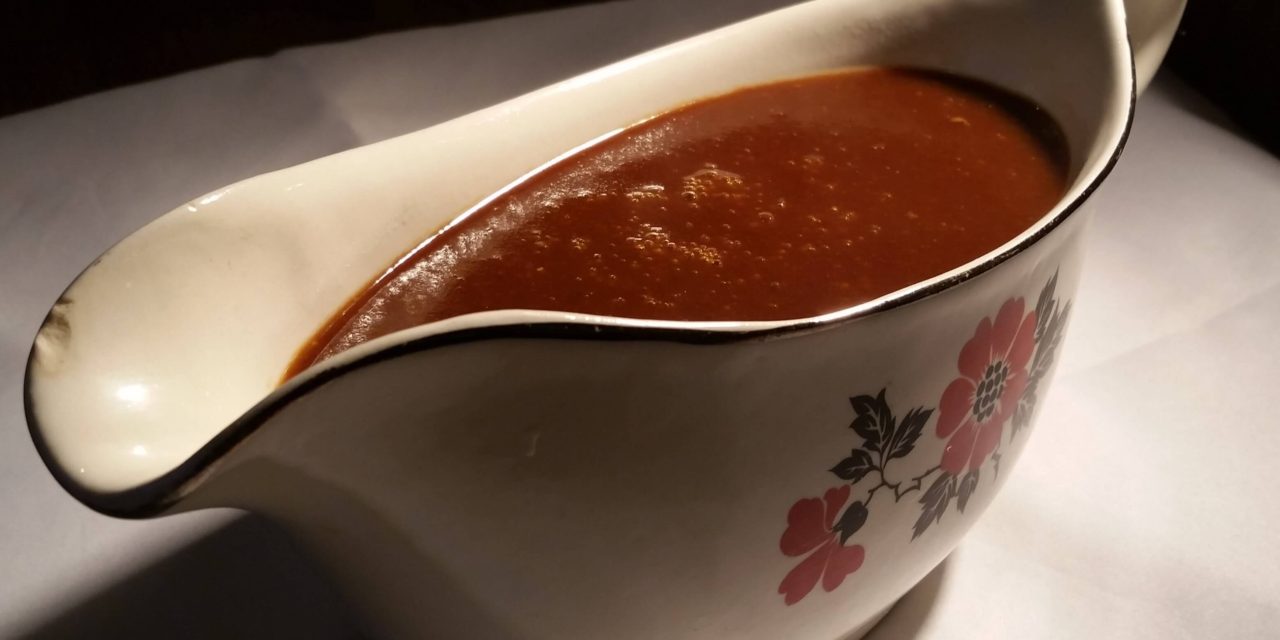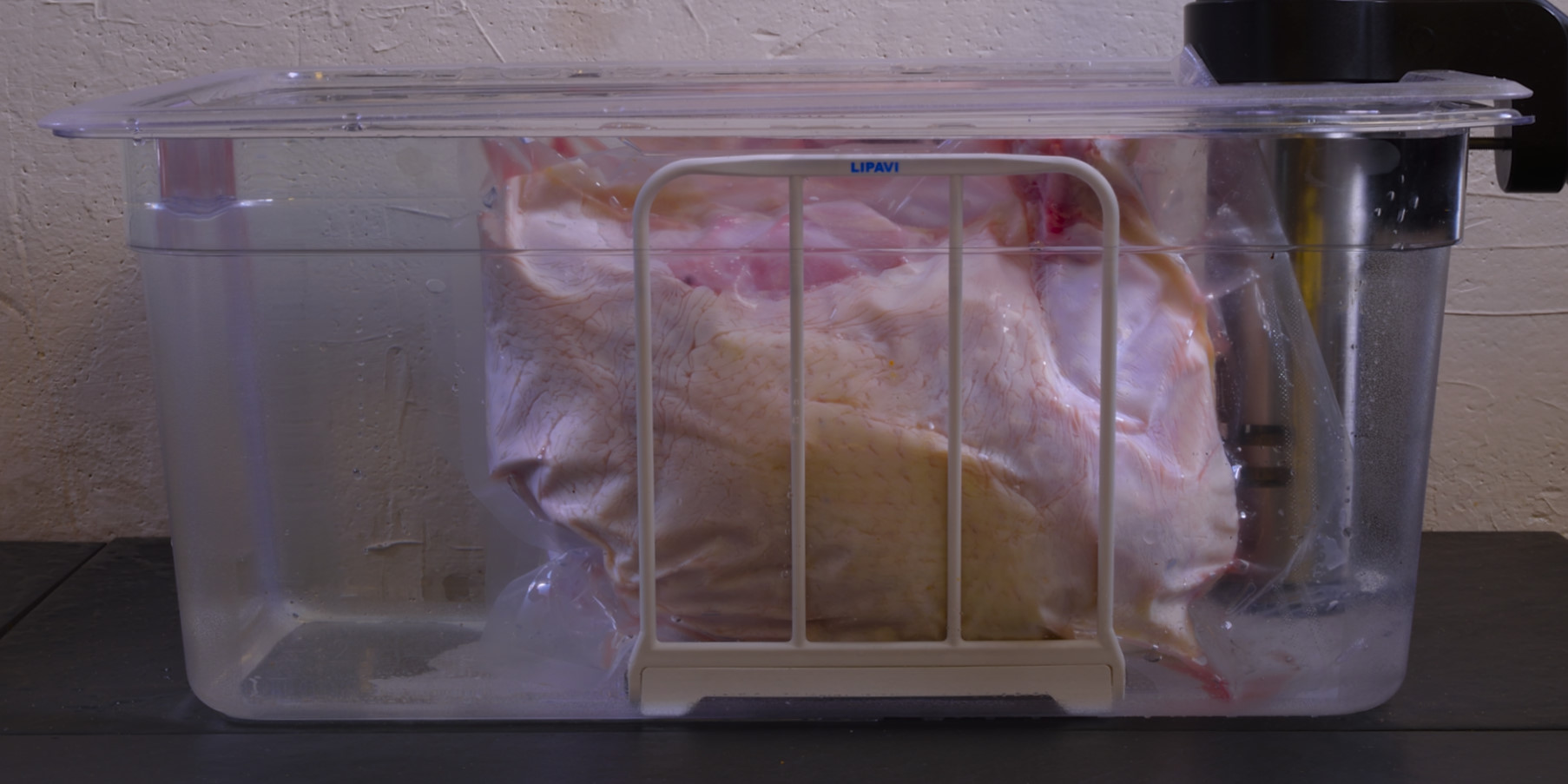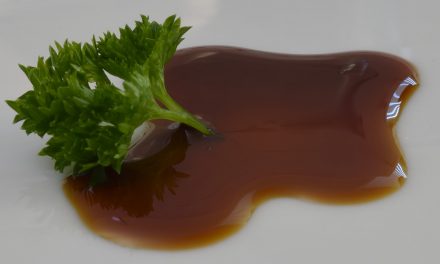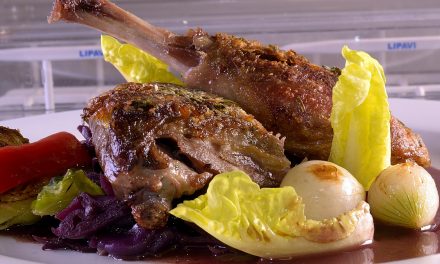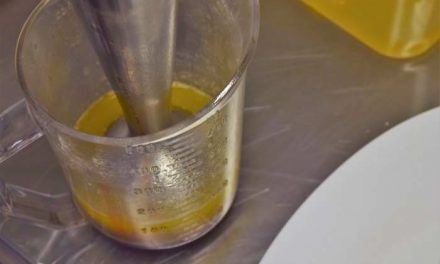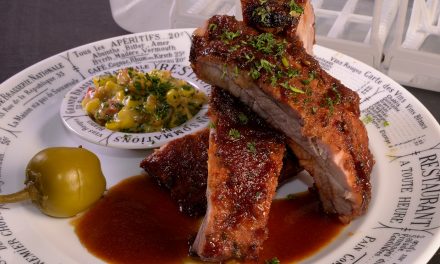Gobble a Turkey, ASAP
What is the difference between sauce and gravy? That question can lead to endless debates that degenerate into anger fueled screaming matches where all the deafened participants pound their tiny fists on the table. But here, we are about inclusion, not distinction. Sauce and gravy have one thing in common, and it’s the only thing that matters. Gravy/sauce is a thickened liquid delivery system for salt, carbo and fat, just as tobacco is a delivery system for nicotine. Is Turkey Gravy an addiction? We shall see.
Sauce and gravy utilize everything with flavor that might be left over from the preparation of proteins. This includes, bones, trimmings, cartilage, sinew, connective tissue–all the things that primitive populations dared not waste for fear of starvation during the impending famine. Pretty much everything but hair and any awful offal that couldn’t be converted into anything palatable. Somebody discovered that these things could be dissolved in boiling water to create a flavorful and nutritious broth, although I can’t really imagine Ron Perlman and his cohorts in that movie having the wherewithal to figure it out. On the other hand, Rae Dawn Chong’s tribe was much more resourceful. Somewhere along the line, somebody realized that thickening the broth would cause it to linger on our tongues, providing not only a more lasting flavor sensation but a little carbo fix besides.
By the time Napoleon showed up, the European aristocracies were cultivating an interest in gastronomy. They bankrolled its development just like they subsidized sculpture, painting, music and other artistic pursuits. The preparation of food for the wealthy became very formalized and elaborate, albeit poorly informed scientifically. Sauces and sweets became extremely popular and were viewed as particularly healthy. Many gastronomes of that era considered refined sugar and butter to be the perfect foods. Actually, I still believe that. Okay, let’s make some Turkey Demi.
Star Date: Thanksgiving or whenever you have a whole turkey
Break down your whole turkey as we explained HERE…
Ingredients:
Turkey (you knew that).
Celery, 4 stalks, cut coarsely.
Carrots, 1-2, cut coarsely.
Onions, 1-2, cut coarsely.
Tomato sauce, 1 can 15 oz/425 g.
Water, 6 qt/6 l.
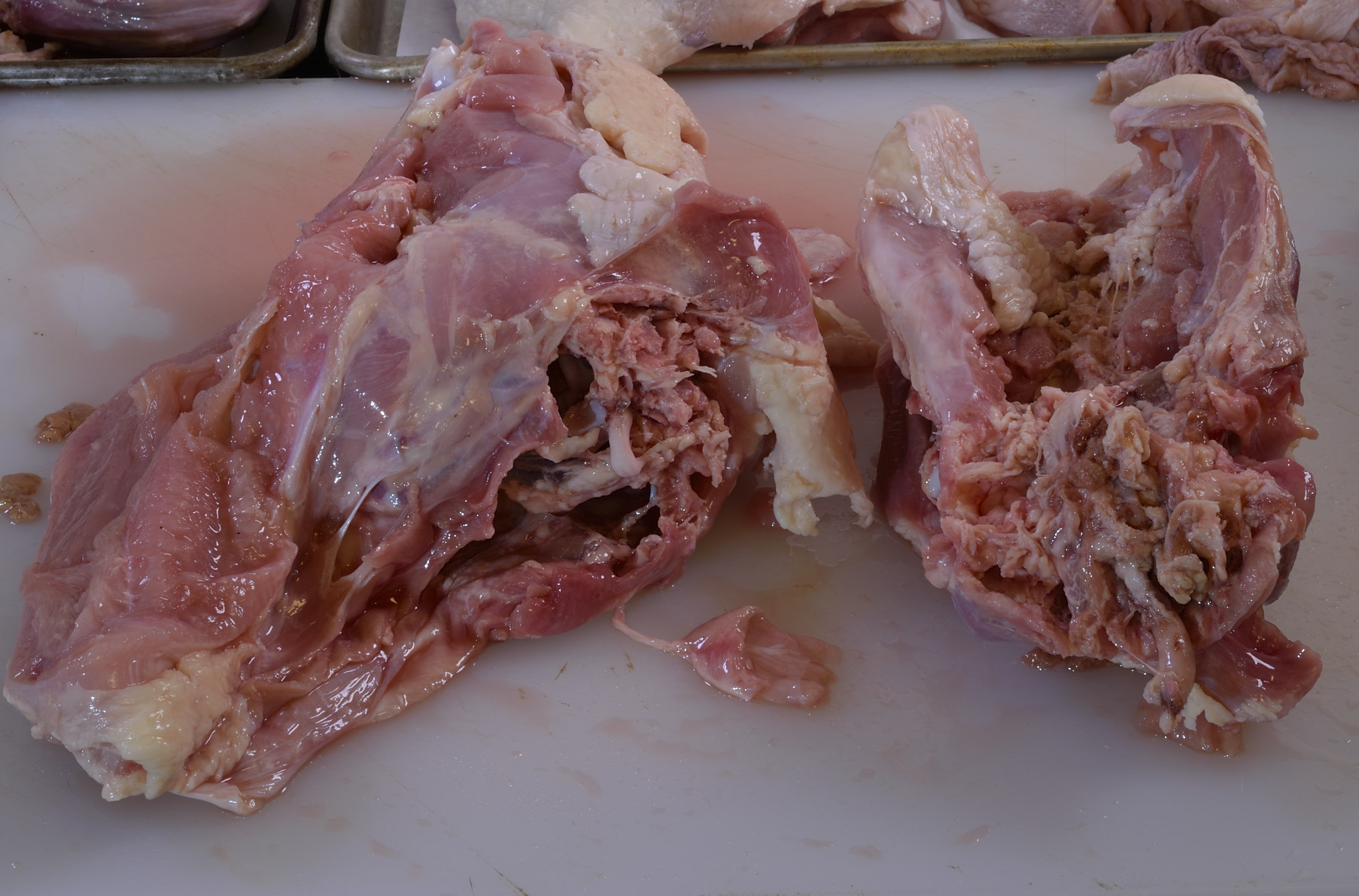
Above: the rib cage on the left, the lower end of the back on the right. The bad news is that it is difficult to remove all the meat from the carcass.
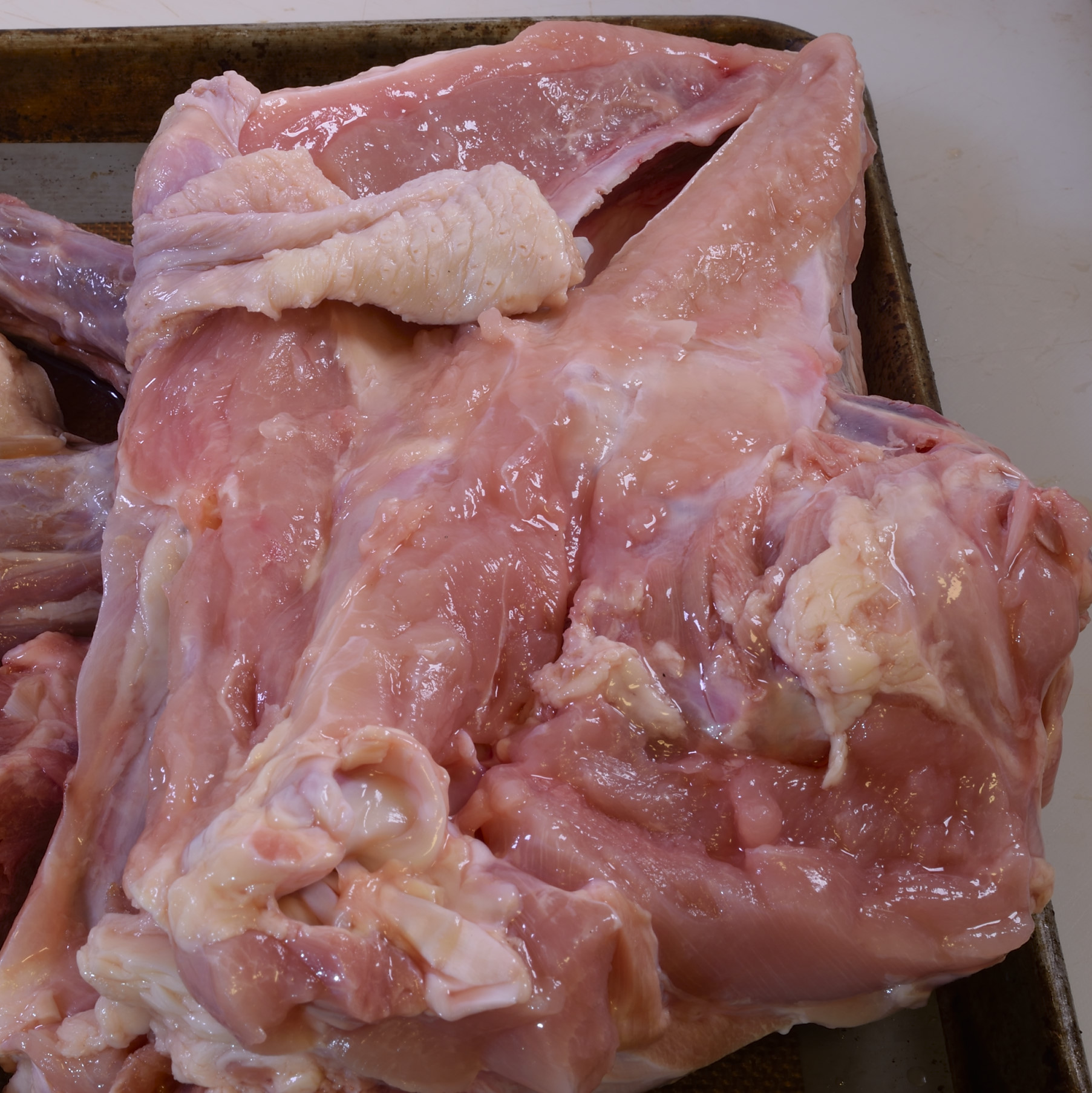
The good news is that the more meat there is on the bones, the better the stock/sauce will be. If you are so inclined, you can pick the meat off the bones after the initial roasting process.
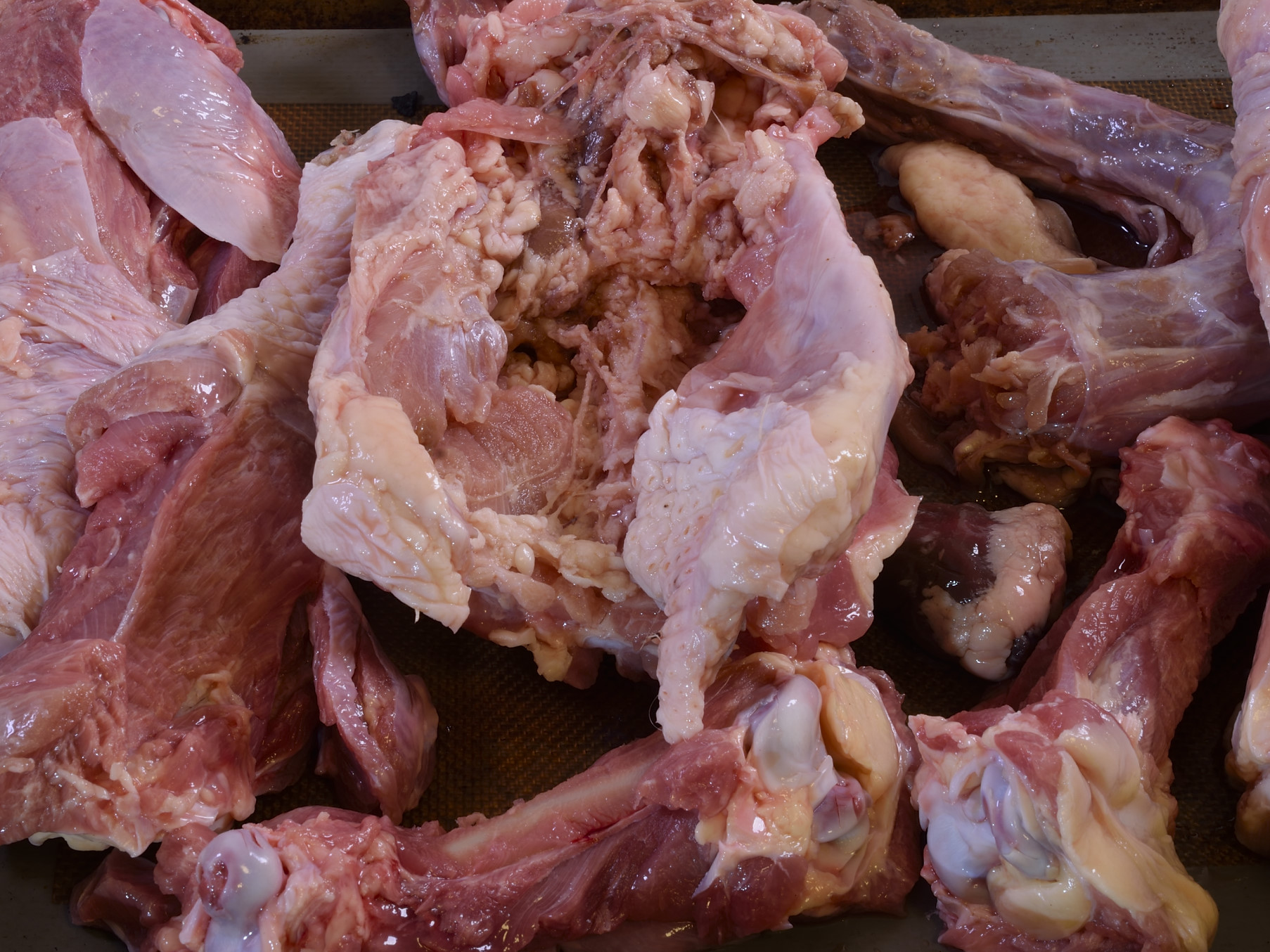
No matter how wasteful your butchering skills may seem, remind yourself that you can usually get a whole turkey for $1.50/lb or thereabouts. That’s a bargain no matter how you look at it.
Preheat your oven to 350 F/176 C.
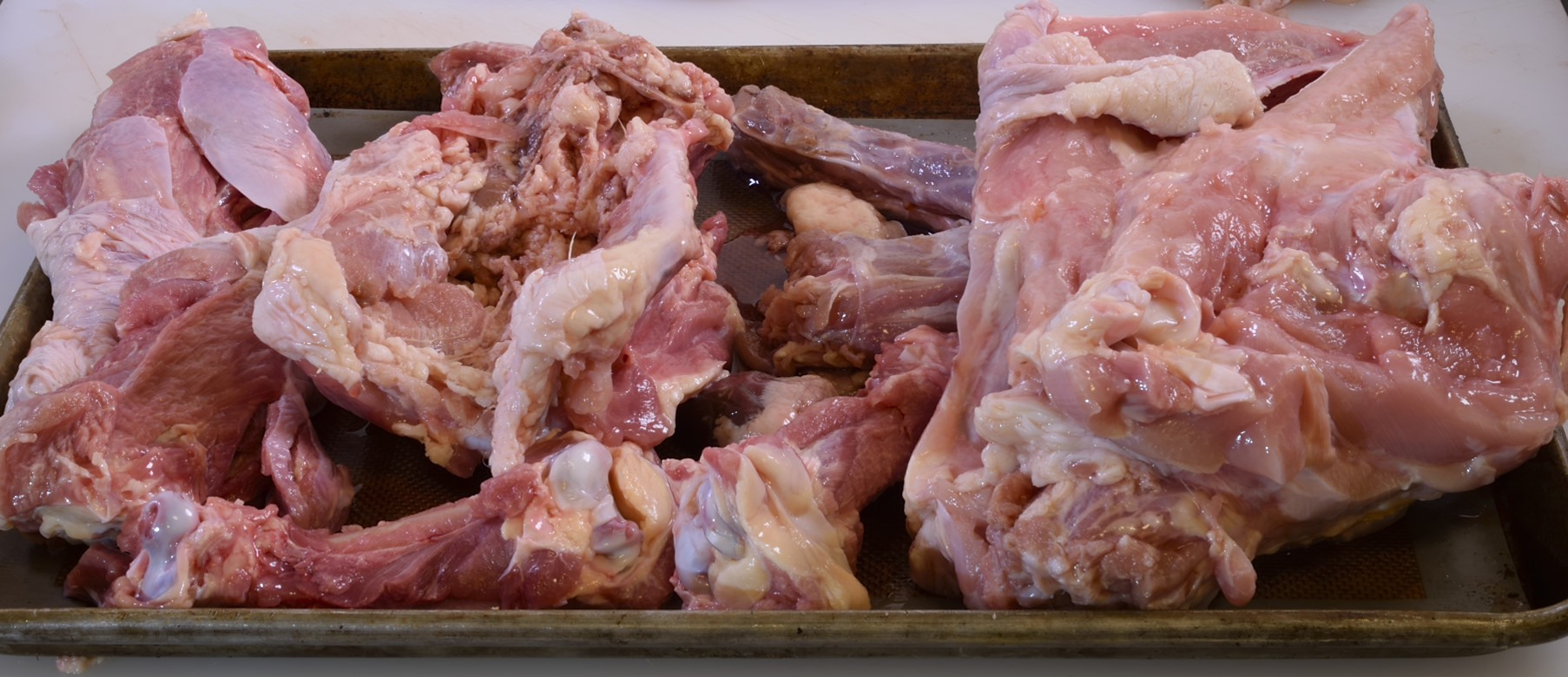
Spread the bones out on a sheet pan covered either with parchment or one of those non-stick silicone baking sheets–very handy. Discard the liver, I still haven’t found a use for it. This time around, we removed the meat from the thigh and leg bones to make ground turkey. Like skinning cats–lots of different ways to do it.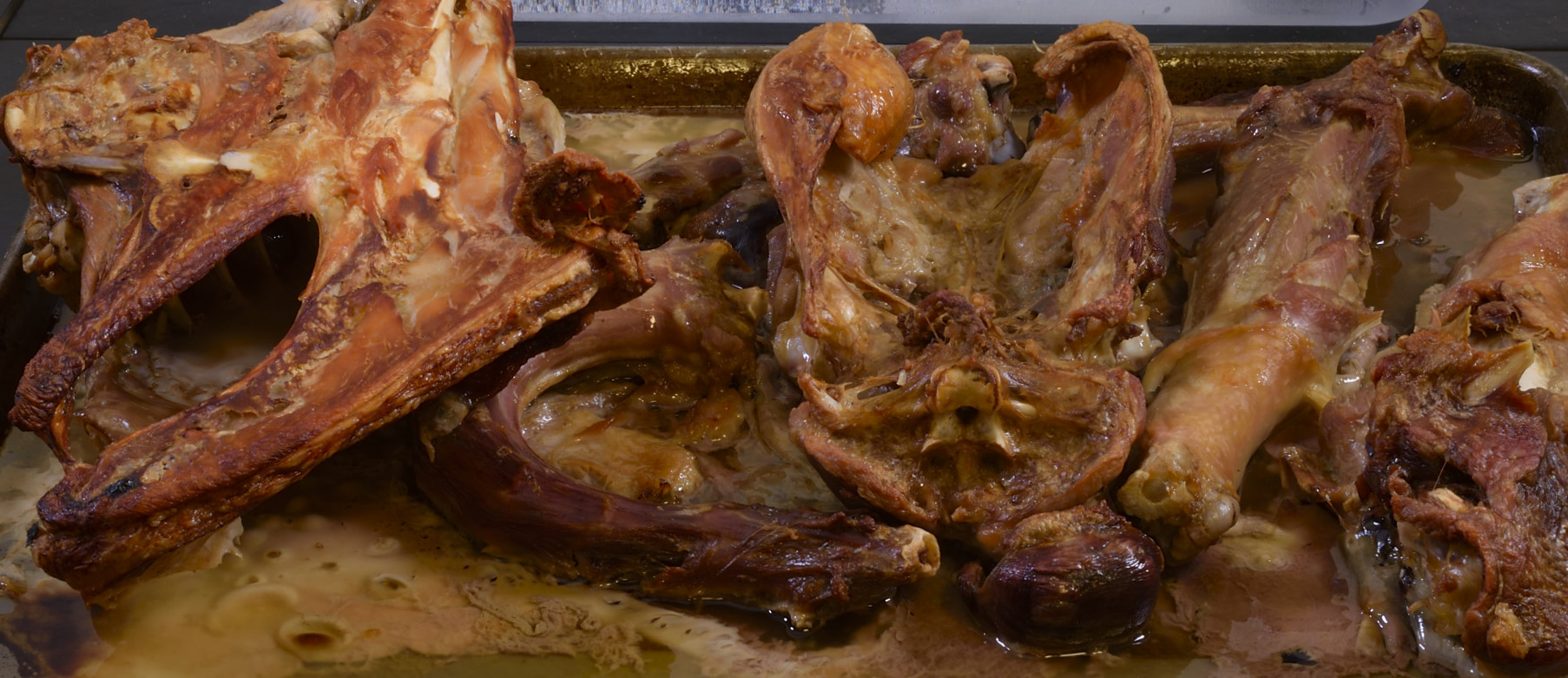
Roast for two hours until the meat is completely browned and rendered. Every time you cannot resist the urge to peek, add 15 minutes to the time interval. That’s how much heat is lost every time the door is opened.
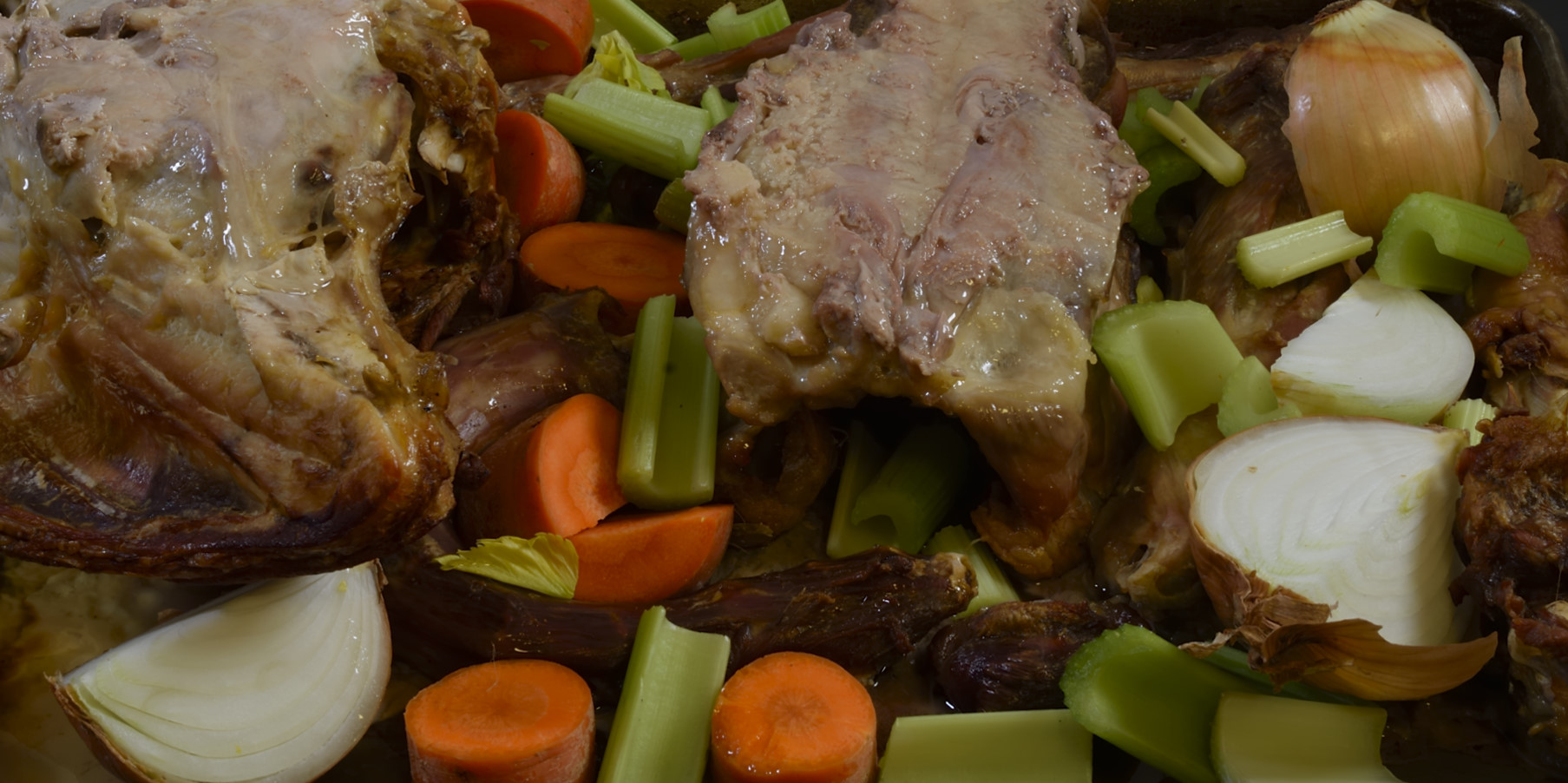
Add the celery, carrots and onions. Purists add the onions later because they brown faster, but both methods work fine.
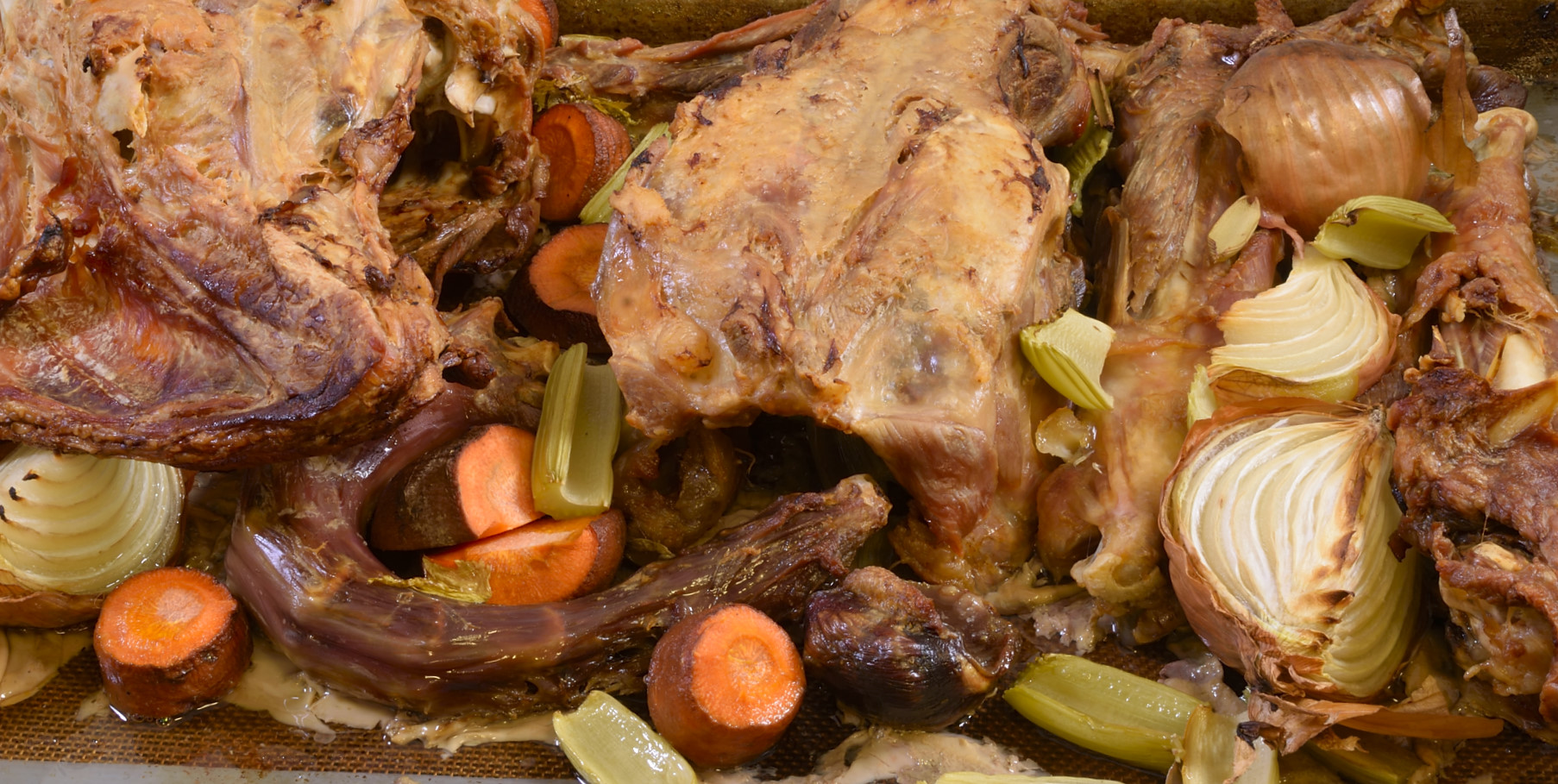
Roast for at least another hour to achieve the desired effect. The stop watch cannot tell us when the vegetables are fully browned–we have to use our eyes to make that determination.
Most cooks drain the excess fat by tipping the pan to the corner–this way is a little neater:
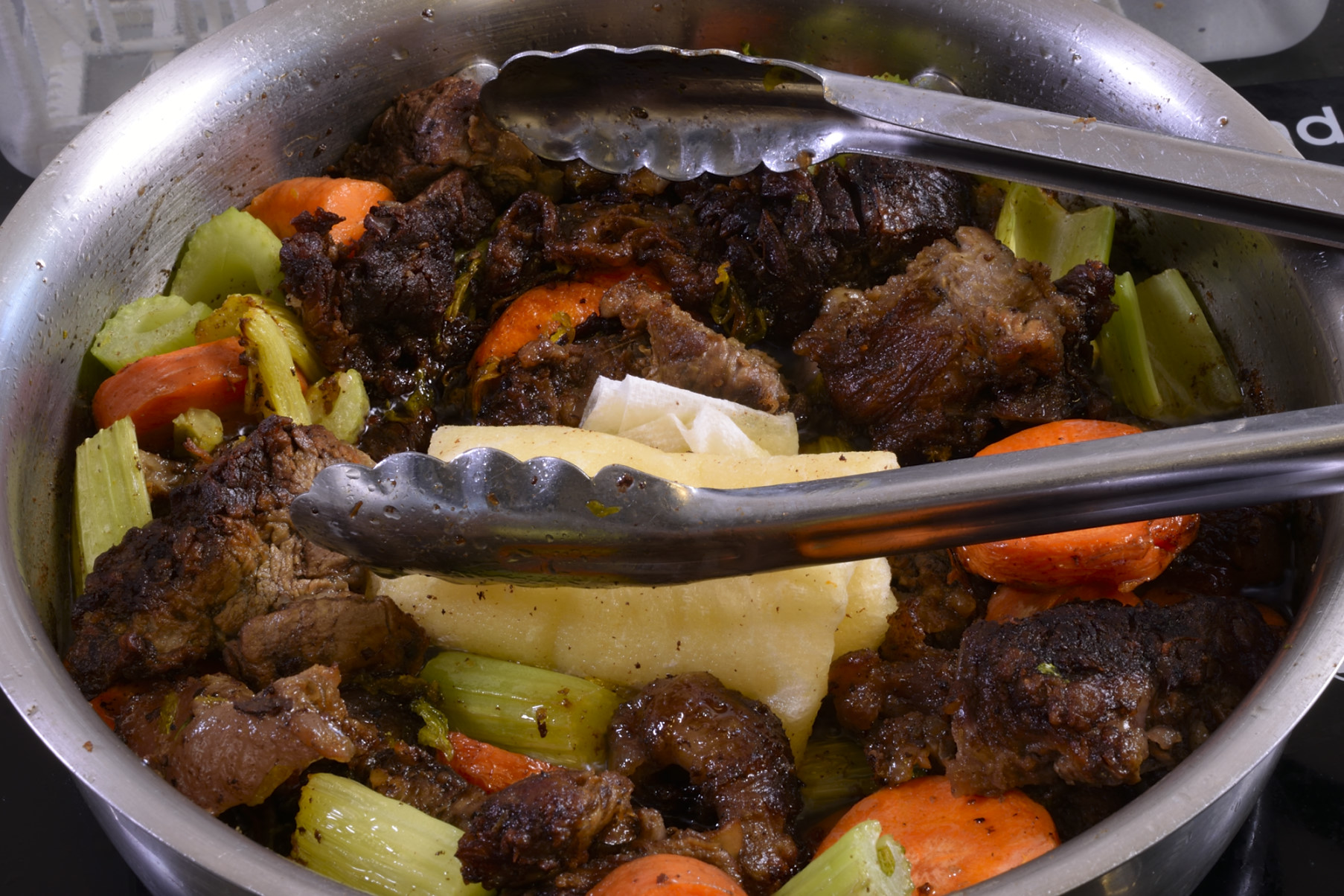
Fold up a couple of paper towels, shove the bones away from the center of the roasting pan and use tongs to press the paper towels into the puddle.
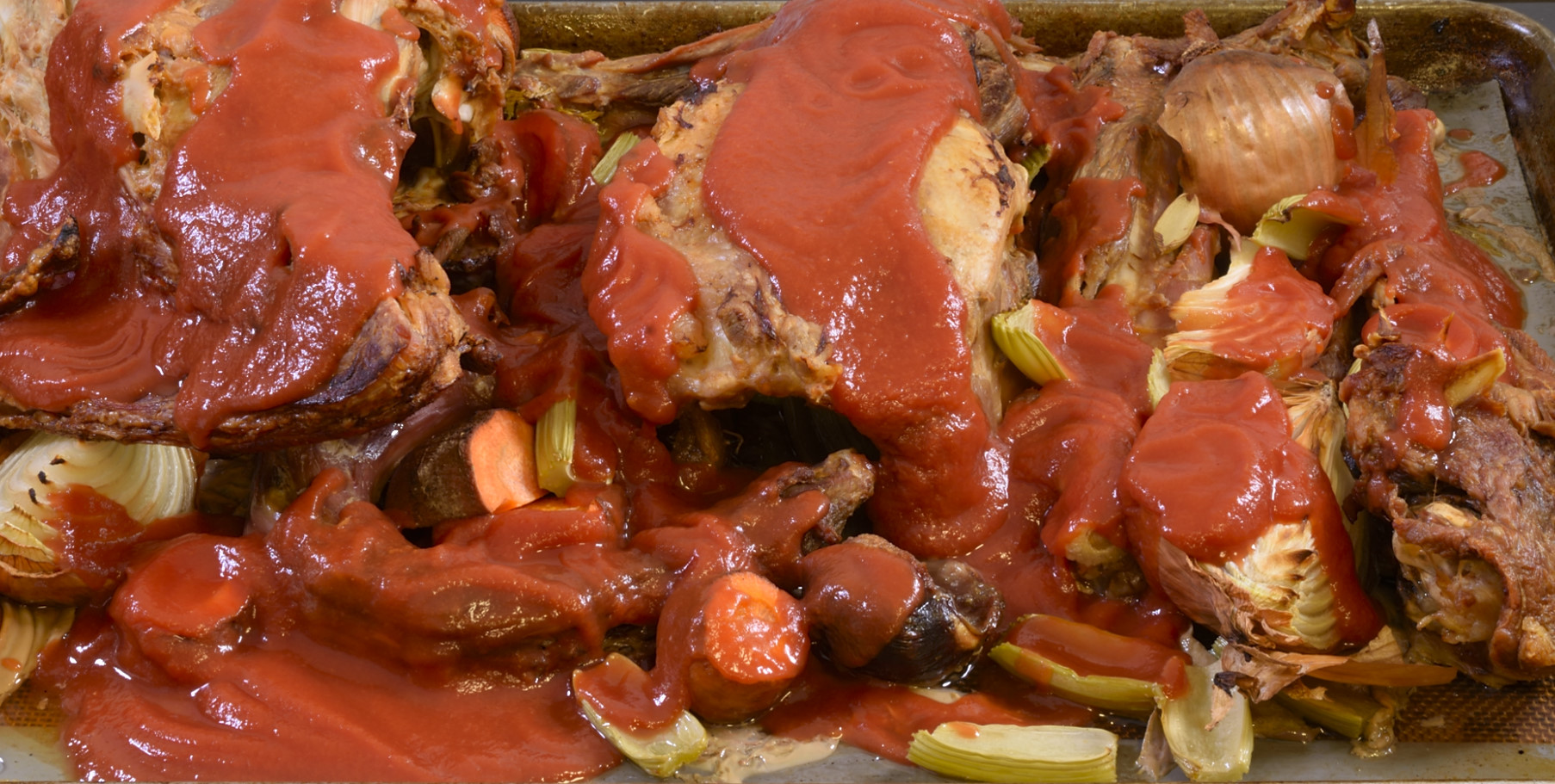
Add one 15 oz/425 g can of plain tomato sauce. If you only have tomato paste, don’t stop and run to the store. Just mix the paste with an equal amount of water and proceed.
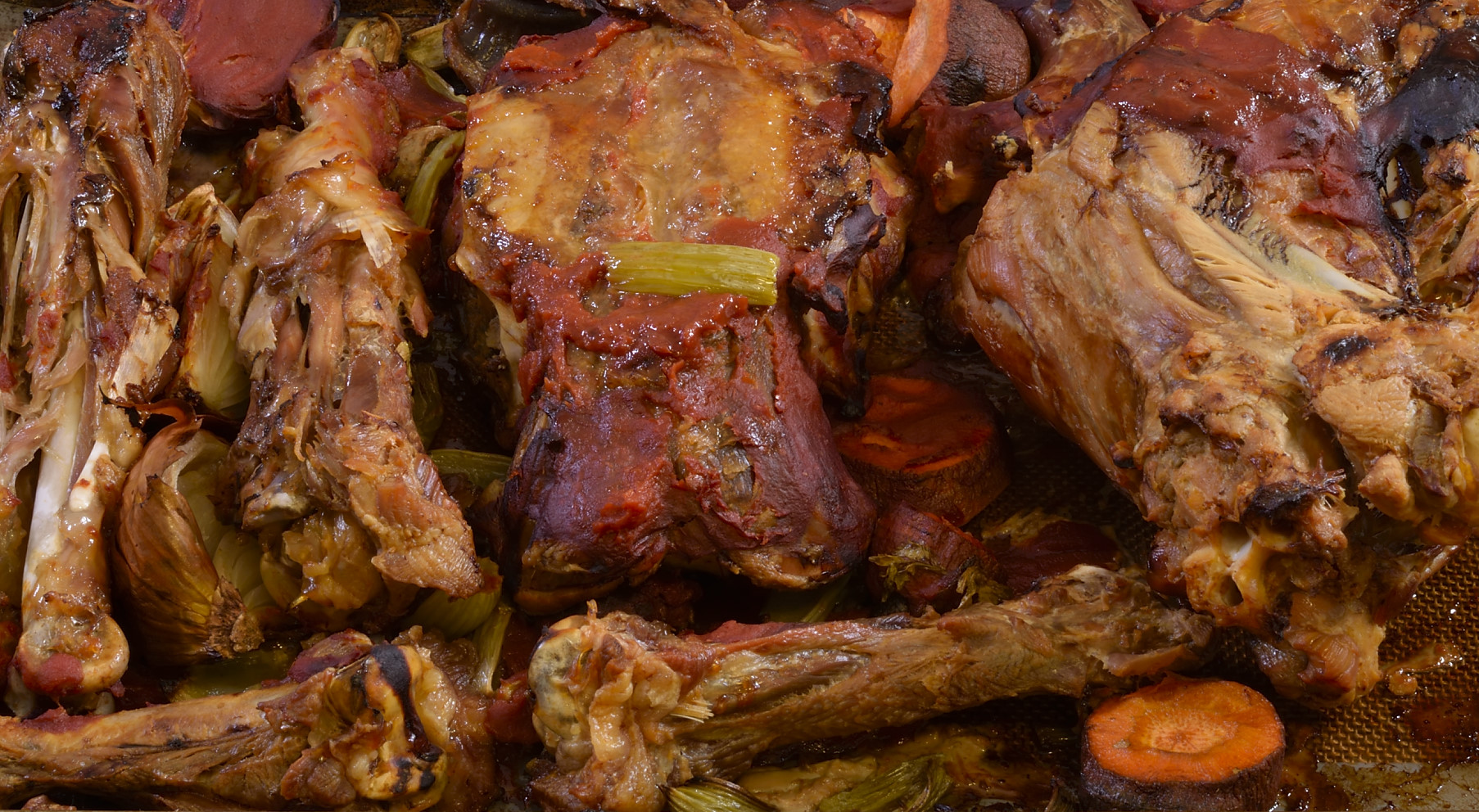
Roast again for at least another hour.
Transfer the mixture to a pot large enough to hold at least 2 gallons/8 l. Add 6 quarts of water to cover and bring just to a boil. Reduce heat to a simmer and cook at least 6 hours. We really want to keep that aroma IN the stock, not wafting around the kitchen and coating the furniture.
Straining the quality of mercy
Pass the stock through a colander–we will filter it through an actual strainer later. I recommend AGAINST lifting the pot and attempting to pour it directly through the colander. Put the colander in a large pot or vessel and use a mug or a measuring cup to transfer the stock. Much easier. MUCH MUCH safer. If your yield is less than 5 qts/5 l, you boiled the stock too vigorously. These things happen. If you end up with more liquid than you started with, notify me of this miracle immediately.
Return the stock to the pot and return to a simmer. The plan is to reduce by half until we have approximately 2 quarts/2 liters. Meanwhile:
Clarification
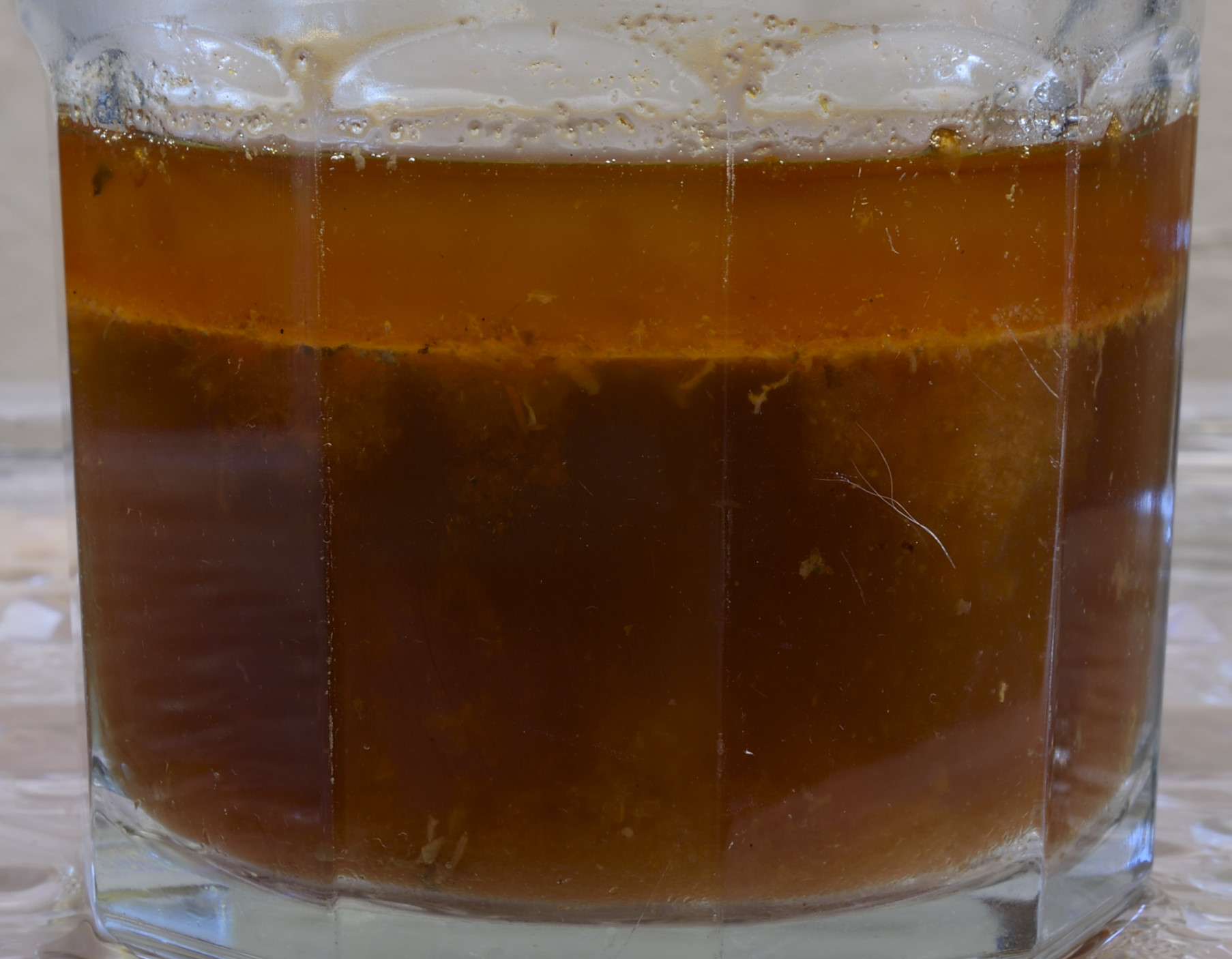
Use a ladle or flat spoon to skim any excess fat off of the top after returning the stock to a simmer, but do not discard. Stage this liquid into a bowl or measuring cup and refrigerate. The fat will solidify and you will be surprised to see how much stock remains below it. Waste not, want not. Discard the fat, use the stock.
Once the volume has achieved approximately 1 quart/1 l, pass the stock through a strainer into an appropriately sized container. Do not wash the pot yet. Mix three egg whites with 3 oz/90 ml of COLD water in the pot. Return the strained stock to the pot and apply medium-low heat. As the stock slowly comes to a boil, the albumen in the egg whites will attract all the other impurities in the stock and form a raft on the top. You can push the stock around a bit with a spatula, but do not actually stir it–keep the raft as intact as possible.
Line the colander with moistened paper towels–moistening prevents the stock from clinging. Slowly pour the stock through the fabric to get this:
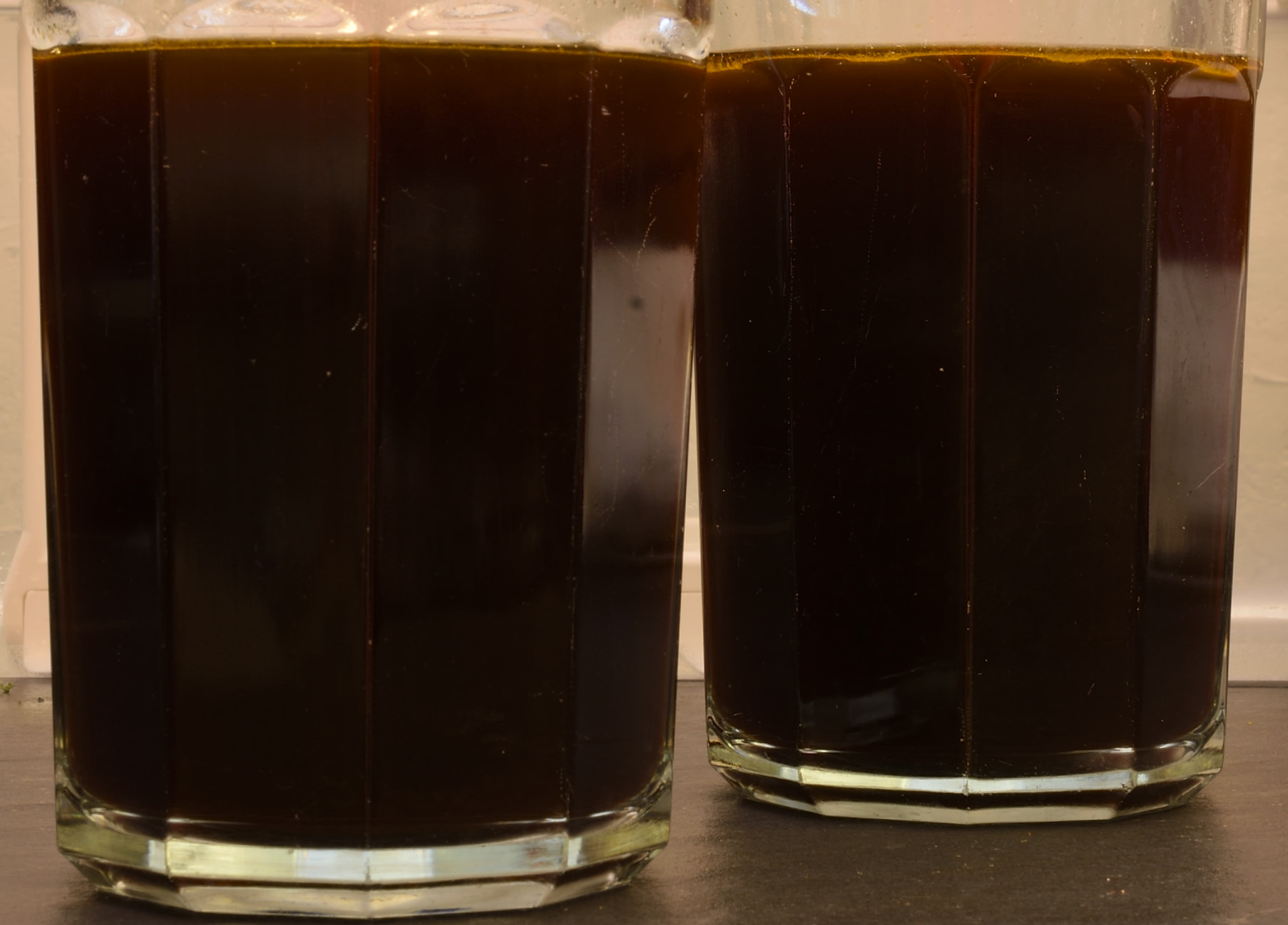
Thickening
Thickened gravies have fallen out of favor with professional chefs but turkey gravy isn’t turkey gravy unless it has been thickened with roux. Roux makes novices nervous, but there is really no mystery once you understand the basic principle.
For every 16 oz of broth, 1 measured Tablespoon of flour will usually achieve the desired thickness.
1 Tablespoon of vegetable oil will dissolve 1 Tablespoon of flour–dissolving flour in the fat medium prevents the grains of flour from clinging to each other once exposed to the hot liquid.
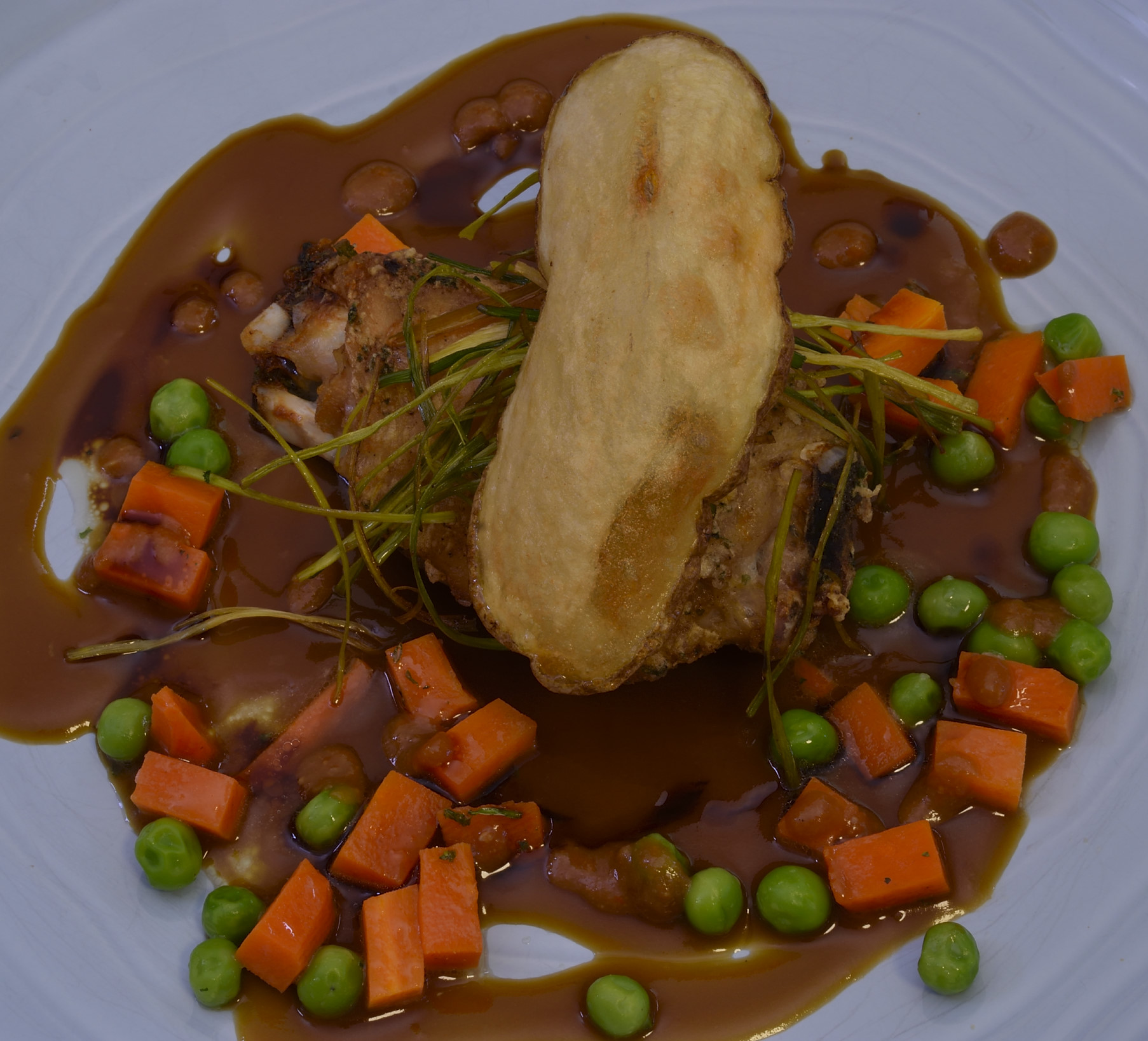
Procedure:
Determine how much stock you have (or how much gravy you want to make). Measure the corresponding amount of flour into a separate bowl. For example, 1 quart of stock will require up to 2 measured Tablespoons (1/8 cup) of flour dissolved in 2 Tablespoons of oil. 2 quarts of stock will require 1/4 cup of flour and so forth.
Measure the oil into a large skillet and heat to 250 F–hot, but not so hot that it smokes. Turn off the burner. Carefully add the flour to the oil and stir with a spatula or whip. I hate whips. It should sizzle and foam, but it should not form black dots. If you see black dots, the oil was too hot, start again. Set aside to cool somewhat. Make sure the stock is hot.
Return the roux to the burner and add half of the measured HOT stock to the skillet. It should boil and thicken immediately. Stir lightly, do not whip. Add the rest of the stock and stir lightly again. Whipping can break the sauce. If the sauce is too thick, add a bit more stock or even water. If it is too thin, you may not have calculated the amounts correctly. Not really, I’m kidding you. It happens. Roux requires a little “feel.”
Simmer for a few minutes and THEN strain through a strainer. You may still come across a little lump once in a while, especially if you cool the sauce and reheat it. A lump never killed anybody. Every time you strain a sauce, you lose a little volume. Check seasoning and serve.
You’re gonna love the way it tastes.
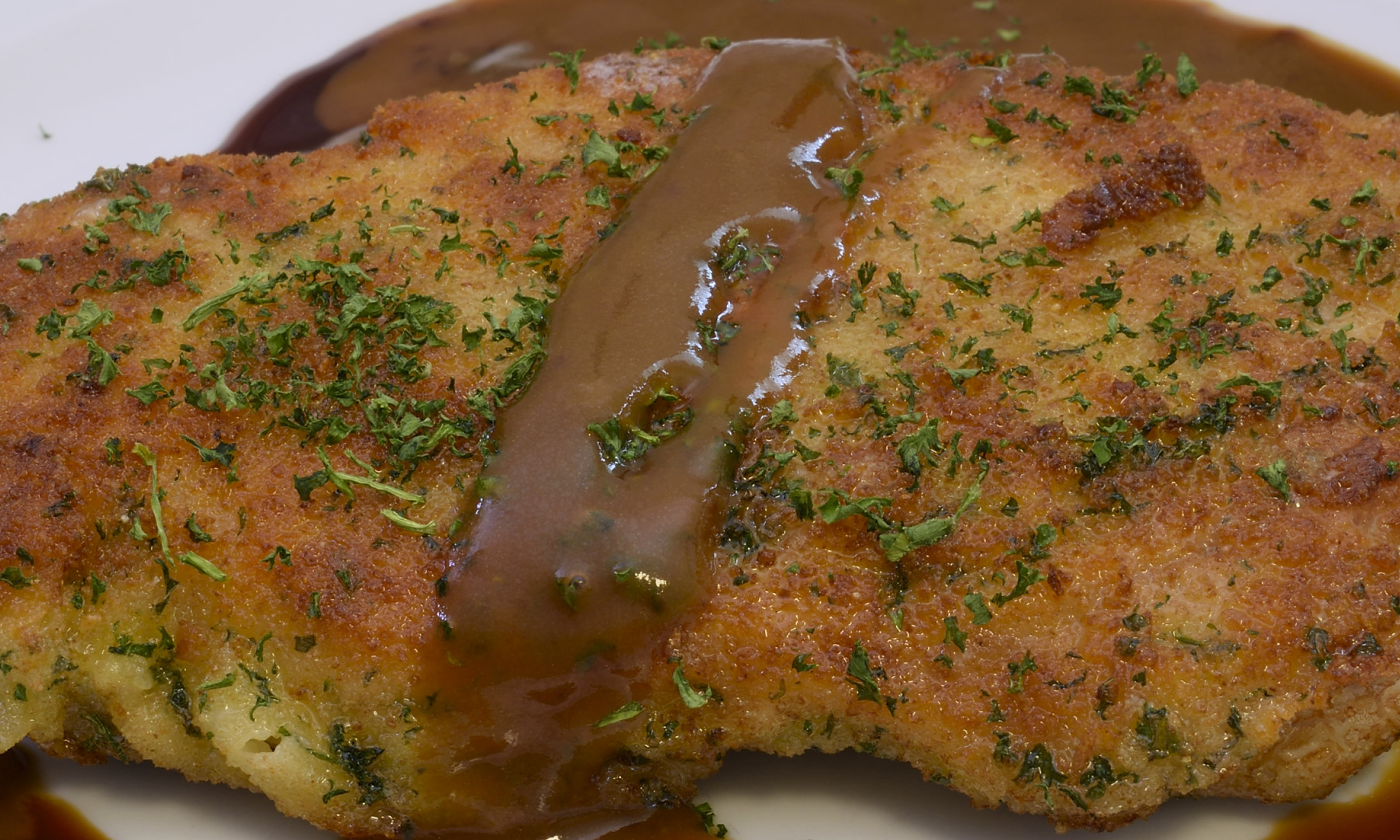
Chicken fried pork cutlet with turkey gravy. It’s a Brave New World.
To fully appreciate this article, make sure you click here.

